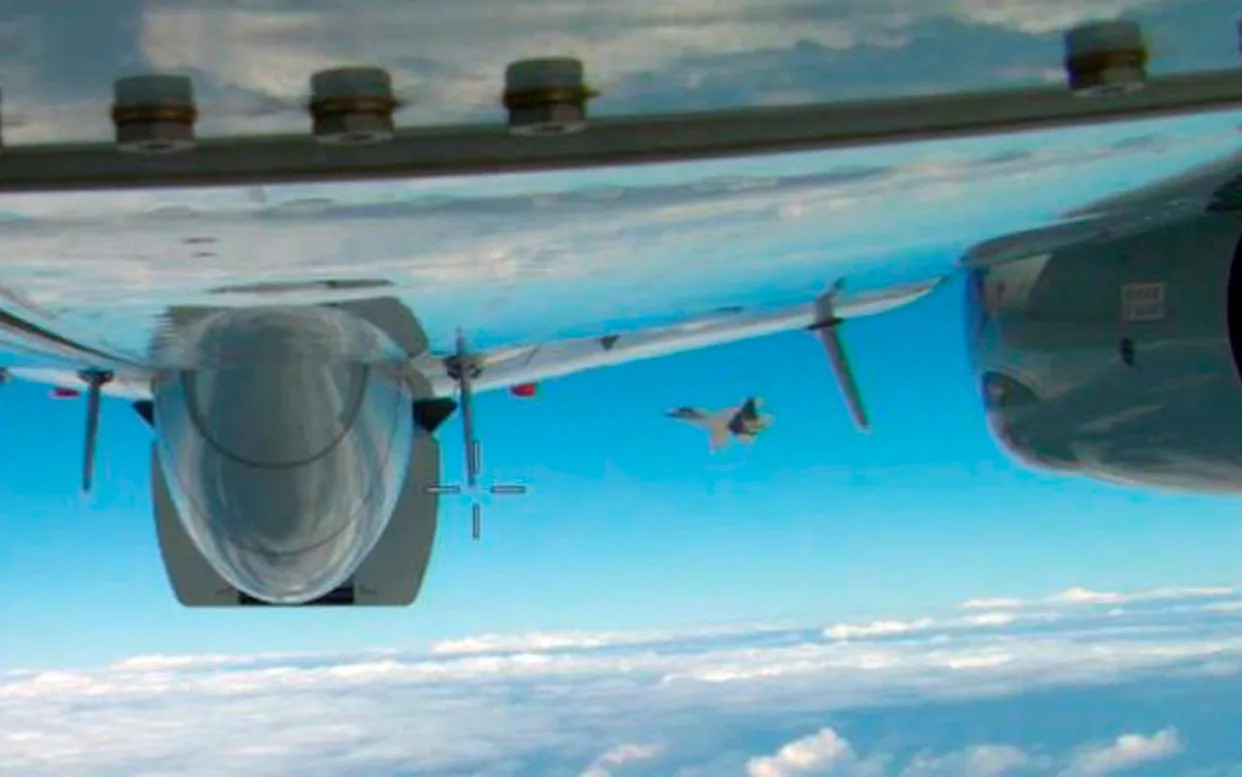China is building a vast, sky-blackening air armada

Good news for the US Navy: after years of eye-watering expansion, the Chinese navy seems to be slowing its growth.
Bad news for the US Air Force: the Chinese air force is growing faster than ever.
These diverging trends complicate the US military’s efforts to deter what it views as the greatest threat to the world order: that is, China’s determination to invade Taiwan and bring the island democracy under Chinese Communist Party rule.
The American fleet has a plan for growing and at least keeping up with the Chinese fleet in certain key capabilities. The American air force, by contrast, has no such plan.
A war over Taiwan could kill hundreds of thousands of people, devastate fragile ecosystems, disrupt global trade and upend politics in every hemisphere. Even more than Russia’s 21-month full-scale war on Ukraine. Even more than the new war between Hamas and Israel, which erupted with little warning when terrorists breached the border wall separating Gaza from southern Israel and killed or abducted more than 1,400 people.
For the United States, deterring a Chinese invasion – or, if that fails, defeating it – is a sea and air problem. No one expects the US Army to play a leading role.
But it’s the possible naval clash that has preoccupied Pentagon planners. Fifteen years ago, the Chinese People’s Liberation Army Navy poured proverbial rocket fuel into what had been a fairly modest shipbuilding machine. But the United States under President George W Bush was preoccupied with the wars in Iraq and Afghanistan. The US Army was growing. The US Navy and US Air Force were slowly shrinking.
It wasn’t until well into Barack Obama’s presidency that the US Defense Department pivoted toward the Pacific and the China problem. “The PLA Navy has embarked on a robust surface-combatant construction program,” the Pentagon warned in the 2013 edition of its annual report on the Chinese military.
To match the Chinese fleet’s growth, the Obama administration proposed to grow the US fleet from 280 front-line ships to 350 by the 2020s. But a pair of botched shipbuilding programs – the lightly-armed, unreliable Littoral Combat Ship and several back-to-back efforts to build new cruisers – consumed tens of billions of dollars without meaningfully growing the American fleet.
Today the US Navy has just 291 front-line ships, and actually expects its ship-count to shrink by five over the next couple of years as Littoral Combat Ships and cruisers decommission, the former after just a few years of service. The PLA Navy has 370 front-line ships, and is on track to grow to 395 by 2025, according to the 2023 edition of the Pentagon’s China report.
The smaller American fleet still holds certain advantages over the bigger Chinese fleet. Its ships in general are bigger, more sophisticated and more heavily armed. And unexpectedly, US Defense Department analysts have cut by five hulls their projection of the Chinese fleet’s peak size.
US naval planners can breathe just a little bit easier. But air-war planners should brace themselves. The same new Pentagon report that downgraded the PLA Navy has massively upgraded the PLA Air Force.
According to the report, the Chinese air force added 500 modern warplanes in a single year. Today, the PLAAF has 1,800 fighters – and 1,300 of them are “fourth-generation” jets with high-tech radars and missiles. As recently as last year, the Chinese air force had 1,900 fighters, but only 800 of them were fourth-generation types such as the J-11 and J-16: rough equivalents of the American F-16 and F-15.
Perhaps most worryingly, Beijing is buying stealthy J-20 fighters – these are “fifth-generation” jets – at a shocking pace. The radar-evading J-20 is China’s answer to the United States’ F-22. But where the US Air Force has just 180 F-22s, the PLAAF already has more than 200 J-20s. Worse, the USAF has asked lawmakers for permission to retire the 30 or so oldest F-22s as a cost-saving measure.
If China makes good on decades of threats and invades Taiwan, analysts expect Chinese fighters to attack Taiwanese forces in the air, at sea and on the ground – and cover Chinese troops as they force their way ashore and march on Taipei.
Taiwan’s own air force, which has just 400 fighters, might not last very long against a force four times its size. It would need the US Air Force’s help to beat back Chinese squadrons. But the Americans are losing their own qualitative and quantitative edge over the Chinese.
The USAF’s salvation might be its 150 bombers. Noting the paucity of air bases in friendly countries within fighter range of Taiwan, the analysts at the Center for Strategic and International Studies in Washington DC, in a January report, urged the Air Force to not even bother deploying its fighters to do battle with Chinese jets over Taiwan.
Instead, the American air arm should pummel Chinese bases, ships and troop formations with long-range cruise missiles fired by long-range bombers flying from bases closer to the United States. When it comes to bombers and cruise missiles, the USAF still hugely outmatches the PLAAF, and this advantage is set to grow as new B-21 stealth bombers and missiles enter service starting in the next few years.
“Prioritize sustainment of the bomber fleet over fighters,” CSIS urged. In war games the think-tank ran simulating a Chinese attack on Taiwan, “the range, missile standoff distance, and high carrying capacity of bombers presented the People’s Liberation Army with daunting challenges.”
So far, USAF leaders aren’t heeding that call for a radically different approach to defeating China and defending Taiwan. They’ve staunchly defended the status quo: a large fighter fleet. But not so large that the Chinese can’t soon match it.
And unlike the US Navy, the US Air Force doesn’t have a serious plan for matching the Chinese air force’s rapid expansion.
- Questions and Answers
- Opinion
- Motivational and Inspiring Story
- Technology
- Live and Let live
- Focus
- Geopolitics
- Military-Arms/Equipment
- Sicherheit
- Economy
- Beasts of Nations
- Machine Tools-The “Mother Industry”
- Art
- Causes
- Crafts
- Dance
- Drinks
- Film/Movie
- Fitness
- Food
- Spiele
- Gardening
- Health
- Startseite
- Literature
- Music
- Networking
- Andere
- Party
- Religion
- Shopping
- Sports
- Theater
- Health and Wellness
- News
- Culture


